Commentary on The Digital Personal Data Protection(Pre-order Book Launch)
by D.P. MittalCONTENTS
CHAPTER 1
INTRODUCTORY
| 1.1 Introduction | 1 |
| 1.2 Historical development | 2 |
| 1.3 Justice Srikrishna Committee Report | 3 |
| 1.4 Principles of the Act | 6 |
| 1.5 Salient Features of the Act | 7 |
| 1.6 Scheme of the Act | 9 |
CHAPTER 2
DATA, PERSONAL DATA AND DATA PROTECTION RIGHT
| 2.1 Introduction | 11 |
| 2.2 Data Protection meaning | 12 |
|
13 |
| 2.3 “Data� means | 14 |
|
14 |
| 2.4 Personal data | 15 |
|
17 |
|
18 |
|
.18 |
|
20 |
|
20 |
| 2.5 Data Protection right and right to privacy (fundamental right) | 21 |
|
23 |
CHAPTER 3
REPRESENTATION IN DIGITAL FORM- DIGITAL TECHNOLOGY
| 3.1 Introduction | 26 |
| 3.2 Digital technology - meaning | 26 |
| 3.3 Digital technology – historical development | 28 |
CHAPTER 4
INFORMATION - INFORMATION TECHNOLOGY AND SOFTWARE TECHNOLOGY
| 4.1 Introduction | 30 |
| 4.2 Pure Information and practical information as a product | 31 |
| 4.3 Information technology means for exchanging information | 33 |
| 4.4 Software - meaning | 34 |
| 4.5 Software - Computer programming to accomplish a specific computing result | 35 |
| 4.6 Computer programme (software) - Two types | 36 |
CHAPTER 5
PERSONAL DATA PROCESSING AND INTERNET TECHNOLOGY
| 5.1 Introduction | 39 |
| 5.2 Processing of personal data- Principles | 39 |
| 5.3 Data processing - manipulation of data by a computer | 41 |
| 5.4 Computer functions and computer software | 42 |
| 5.5 Electronic transmission of information | 43 |
| 5.6 Internet technology (or “World Wide Web�) | 45 |
|
48 |
|
48 |
| 5.7 Internet - e-commerce | 49 |
|
50 |
CHAPTER 6
SCOPE OF THE ACT
| 6.1 Introduction | 51 |
| 6.2 Scope | 51 |
| 6.3 Ingredients of section 3 | 52 |
| 6.4 Processing within and outside India | 52 |
| 6.5 Non-applicability of the Act | 55 |
CHAPTER 7
DATA FIDUCIARY – OBLIGATIONS
| 7.1 Introduction | 56 |
| 7.2 Data fiduciary – a relationship of trust | 56 |
| 7.3 Data processing – Principles | 57 |
| 7.4 Processing personal data – Ground | 57 |
|
58 |
| 7.5 Request for consent - notice by data fiduciary | 59 |
| 7.6 Consent necessary for processing personal data | 60 |
|
61 |
|
62 |
|
64 |
|
64 |
| 7.7 Personal data processing – legitimate purposes | 65 |
|
67 |
| 7.8 Data fiduciary - general obligations | 68 |
| 7.9 Personal data of children - processing | 69 |
| 7.10 Significant Data Fiduciary - additional obligations of | 71 |
CHAPTER 8
�
| 8.1 Introduction | 72 |
| 8.2 Right to access information about personal data | 72 |
| 8.3 Right to correction and erasure | 73 |
| 8.4 Right of grievance redressal. | 74 |
| 8.5 Right to nominate | 74 |
| 8.6 Duties of Data Principal | 74 |
CHAPTER 9
PROCESSING OF PERSONAL DATA – EXEMPTIONS
| 9.1 Introduction | 76 |
| 9.2 Exemptions – five types | 76 |
| 9.3 Exemptions - Processing of personal data by data fiduciary | 77 |
|
78 |
| 9.4 Exemption – processing of personal data - in the interests of sovereignty of India, security of State, public order, etc | 79 |
| 9.5 Exemption – processing of personal data necessary for research | 81 |
| 9.6 Exemption – processing of personal data by data fiduciariesas notified by Central Government | 81 |
| 9.7 Exemption- processing for correcting inaccurate data | 81 |
| 9.8 Exemption – before expiry of five years from commencement of Act | 82 |
CHAPTER 10
DATA PROTECTION BOARD OF INDIA
| 10.1 Introduction | 83 |
| 10.2 Establishment of Board | 84 |
| 10.3 Composition and qualification | 84 |
| 10.4 Disqualification for appointment and continuance | 84 |
| 10.5 Disqualification and removal – Insolvency, conviction, infirmity, etc | 85 |
|
85 |
|
85 |
|
85 |
|
85 |
|
86 |
| 10.6 Proceedings of Board | 87 |
|
87 |
| 10.7 Powers and functions of Board | 89 |
| 10.8 Power to issue directions | 89 |
|
89 |
| 10.9 Power to review | 92 |
| 10.10 Procedure to be followed by Board | 93 |
| 10.11 Power to conduct inquiry, etc | 94 |
|
94 |
| 10.12 Board guided by the principles of natural justice and not Procedure- Code of Civil Procedure | 95 |
|
96 |
| 10.13 Board Power - Power of Civil Court | 97 |
|
98 |
|
98 |
|
100 |
|
100 |
| 10.14 Interim order and closing proceedings | 102 |
| 10.15 Interlocutory orders | 103 |
| 10.16 Frivolous complaint | 104 |
| 10.17 Chairperson, Members and Officers – Public servants | 104 |
CHAPTER 11
APPEAL AND ALTERNATE DISPUTE RESOLUTION
| 11.1 Introduction | 105 |
| 11.2 Appeal- Meaning | 106 |
|
106 |
| 11.3 Preferring Appeal | 107 |
|
107 |
|
108 |
| 11.4 Any person aggrieved | 110 |
|
110 |
| 11.5 Appellate Tribunal-Order | 111 |
|
111 |
|
112 |
|
113 |
|
113 |
|
114 |
|
114 |
| 11.6 Appellate Trtibunal not a court | 115 |
|
116 |
|
119 |
| 11.7 Procedural safeguard | 120 |
| 11.8 issuing commission | 120 |
| 11.9 Reviewing decisions | 123 |
| 11.10 Recalling order | 127 |
| 11.11 deciding ex parte | 127 |
| 11.12 Finality of order | 127 |
| 11.13 Deciding appeal within six months | 128 |
| 11.14 Appellate order executed as a decree | 129 |
|
129 |
|
130 |
| 11.15 Alternate Dispute Resolution | 132 |
| 11.16 Voluntary undertaking | 132 |
| 11.17 Appeal against Appellate Tribunal order | 133 |
| 11.18 Question of law | 133 |
|
134 |
|
135 |
CHAPTER 12
PENALTIES
| 12.1 Introduction | 136 |
| 12.2 Penalty – meaning | 136 |
| 12.3 Offences punishable and penalty leviable | 137 |
| 12.4 Penalty – steps | 137 |
|
138 |
|
138 |
|
138 |
|
139 |
| 12.5 Quantum of Punishment, factors | 140 |
|
141 |
|
141 |
CHAPTER 13
PROTECTION OF ACTION TAKEN IN GOOD FAITH
| 13.1 Introduction | 143 |
| 13.2 Suit, Prosecution or legal Proceedings – meaning | 143 |
| 13.3 Act done under the Act | 144 |
| 13.4 Act done in good faith | 145 |
| 13.5 Exercise of power in good faith or misuse in bad faith | 145 |
| 13.6 Protection against institution of vexatious proceedings | 148 |
CHAPTER 14
CONSISTENCY OF ACT WITH OTHER LAWS
| 14.1 Introduction | 151 |
| 14.2 In addition to and not in derogation of | 151 |
| 14.3 DPDP Act being a special provision prevails over other provisions | 154 |
|
155 |
CHAPTER 15
BAR OF JURISDICTION OF CIVIL COURT
| 15.1 Introduction | 157 |
| 15.2 Two bars | 157 |
|
158 |
|
158 |
|
158 |
|
159 |
| 15.3 Civil Court jurisdiction is not completely ousted | 159 |
| 15.4 Order is subject to judicial review | 160 |
CHAPTER 16
RULES, REMOVAL OF DIFFICULTIES, CALLING INFORMATION, ISSUING DIRECTIONS
| 16.1 Introduction | 162 |
| 16.2 Legislature delegating power - Justification | 163 |
| 16.3 Delegated legislation - Classification | 163 |
| 16.4 Central Government Power to Make Rules | 164 |
| 16.5 Laying of rules before Parliament | 164 |
|
164 |
| 16.6 Rules-Statutory force | 166 |
| 16.7 Rules – not retrospective | 166 |
| 16.8 Publication | 167 |
| 16.9 Power to amend Schedul | 168 |
| 16.10 Power to remove difficulties | 168 |
|
169 |
|
169 |
|
170 |
| 16.11 Power to call information | 170 |
| 16.12 Power of Central Government to issue directions | 170 |
| Introduction | 171 |
| Rules have the same force as if enacted under the Act | 171 |
| Laying of rules and certain notifications | 172 |
| Laying before the Houses of Parliament would mean legislative functions not abandoned | 172 |
| Laying before the Houses of Parliament – various methods | 173 |
| Central Government power to amend Schedule | 175 |
CHAPTER 17
INTERPRETATIVE PRINCIPLES
| 17.1 Interpretation- meaning | 176 |
| 17.2 Interpretation and construction - Distinction | 176 |
| 17.3 Interpretation-General Rules | 177 |
| 17.4 Literal rule of interpretation | 178 |
| 17.5 Ambiguity | 179 |
| 17.6 Contextual interpretation | 180 |
| 17.7 Golden Rule | 182 |
| 17.8 Mischief rule- (Haydon’s rule) | 183 |
| 17.9 Purposive interpretation | 183 |
| 17.10 Rules of interpretation – summing up | 185 |
| 17.11 Aids to Interpretation | 188 |
|
188 |
|
188 |
|
188 |
|
189 |
|
189 |
|
189 |
| 17.12 Proviso- Exception to main provision | 190 |
|
191 |
|
192 |
|
192 |
| 17.13 Explanation | 193 |
|
194 |
| 17.14 Exception | 194 |
| 17.15 Clarificatory provision | 195 |
| 17.16 Rule of language | 195 |
| 17.17 Provision - Mandatory or directory | 195 |
|
197 |
|
197 |
|
198 |
|
198 |
|
198 |
|
199 |
| 17.18 Strict interpretation | 199 |
|
199 |
|
201 |
|
202 |
|
203 |
CHAPTER 18
THE DIGITAL PERSONAL DATA PROTECTION ACT, 2023
CHAPTER I
PRELIMINARY
| 1. Short title and commencement | 205 |
| 2. Definitions | 205 |
| 3. Application of Act | 208 |
CHAPTER II
OBLIGATIONS OF DATA FIDUCIARY
| 4. Grounds for processing personal data | 209 |
| 5. Notice | 209 |
| 6. Consent | 210 |
| 7. Certain legitimate | 212 |
| 8. General obligations of Data Fiduciary | 213 |
| 9. Processing of personal data of children | 215 |
| 10. Additional obligations of Significant Data Fiduciary | 216 |
CHAPTER III
RIGHTS AND DUTIES OF DATA PRINCIPAL
| 11. Right to access information about personal data | 216 |
| 12. Right to correction and erasure of personal data | 217 |
| 13. Right of grievance redressal | 218 |
| 14. Right to nominate | 218 |
| 15. Duties of Data Principal | 218 |
CHAPTER IV
SPECIAL PROVISIONS
| 16. Processing of personal data outside India | 219 |
| 17. Exemptions | 219 |
CHAPTER V
DATA PROTECTION BOARD OF INDIA
| 18. Establishment of Board | 221 |
| 19. Composition and qualifications for appointment of Chairperson and Members | 221 |
| 20. Salary, allowances payable to and term of office | .222 |
| 21. Disqualifications for appointment and continuation as Chairperson and Members of Board | 222 |
| 22. Registration by Members and filling of vacancy | 222 |
| 23. Proceedings of Board | 222 |
| 24. Officers and employees of Board | 223 |
| 25. Members and officers to be public servants | 223 |
| 26. Powers of Chairperson | 223 |
CHAPTER VI
DATA PROTECTION BOARD OF INDIA
POWERS, FUNCTIONS AND PROCEDURE TO BE FOLLOWED BY BOARD
| 27. Powers and functions of Board | 224 |
| 28. Procedure to be followed by Board | 225 |
CHAPTER VII
APPEAL AND ALTERNATE DISPUTE RESOLUTION
| 29. Appeal to Appellate Tribunal | 226 |
| 30. Orders passed by Appellate Tribunal to be excecutable as decree | 227 |
| 31. Atternate dispute resolution | 227 |
| 32. Voluntary undertaking | 227 |
CHAPTER VIII
PENALTIES AND ADJUDICATION
| 33. Penalties | 228 |
| 34. Crediting sums realised by way of penalties to Consolidated Fund of India | 228 |
CHAPTER IX
MISCELLANEOUS
| 35. Protection of action taken in good faith | 228 |
| 36. Power to call information | 228 |
| 37. Power of Central Government to issue directions | 228 |
| 38. Consistency with other laws | 229 |
| 39. Bar of jurisdiction | 229 |
| 40. Power to make rules | 229 |
| 41. Laying of rules and certain notifications | 231 |
| 42. Power to amend Schedule | 231 |
| 43. Power to remove difficulties | 232 |
| 44. Amendments to certain Acts | 232 |
| THE SCHEDULE | 233 |
About the Author
D.P. Mittal
D.P. Mittal-D.P. Mittal is an advocate, tax and business law consultant. He has authored about two hundred articles in Indian and foreign magazines and journals and also books on various law subjects; some of them are as follows: Interpretation of Taxing Statutes, Wills, Deeds and Documents; Laws relating to Copyrights, Patents, Trade Marks and GATT; Business and Commercial Laws; Law of Arbitration, ADR and Contract in India; Indian Patents Law; Natural Justice, Judicial Review & Administrative Law; Law of Trade Marks; Law of Information Technology (Cyber Law); Law of Arbitration (2002); Indian Patents Law and Procedure (2002); Trade Marks Passing off and Geographical Indications of Goods - Law and Procedure (2002); Competition Law; Law relating to Sick Industries; Interpretation of Statutes; Law Dictionary
Have Questions About This Book?
Our course advisors are here to help you make the right decision for your career growth.
Other books
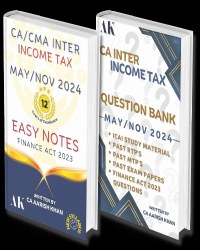
CA/CMA INTER COMBO - COLOURED EASY NOTES + QUESTION BANK
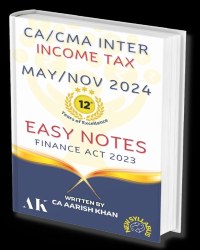
CA/CMA INTER EASY NOTES COLOURED
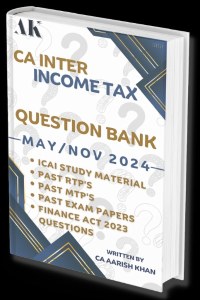
CA/CMA INTER INCOME TAX QUESTION BANK

GST (IDT) Book - 4th Edition | May, Sept 2026 & Jan 2027 Attempt
List your Books
Share your knowledge and help shape the next generation of tech-savvy CA & Tax professionals while building a rewarding career in education.
Get Started

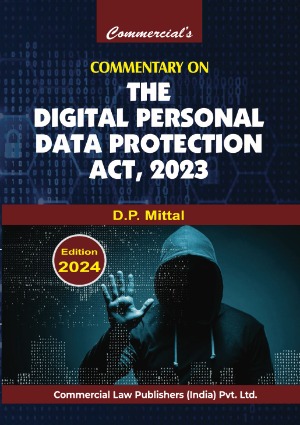
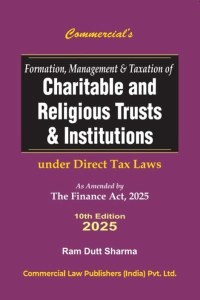
 CAclubindia
CAclubindia
